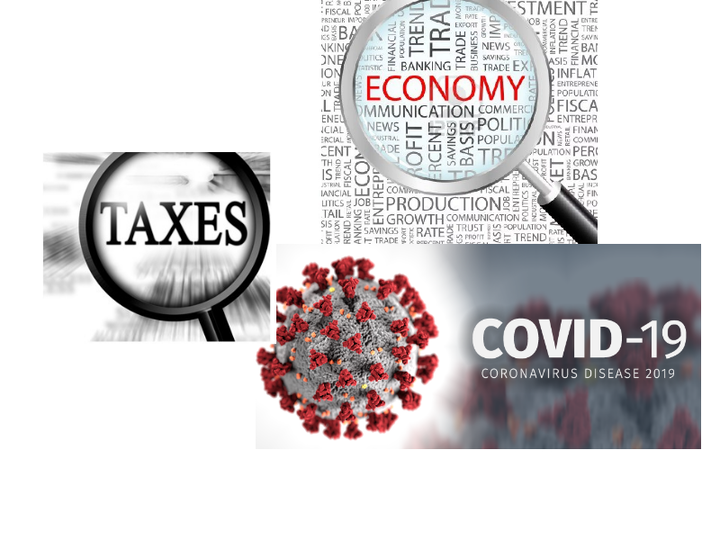
Now that we have made it safely through 2020, the Canada Revenue Agency wants to hear all about it, on our income tax returns. A number of tax reporting obligations for businesses and individuals have arisen out of our 2020 COVID-19 realities. This article covers some of the key reporting obligations and guidance that you should be aware of.
Businesses
Reporting of Government Assistance Received
COVID-19 assistance received for 2020 is generally taxable and must be reported on your annual income tax return. This includes, among others, the following government assistance:
CEWS: The Canada Emergency Wage Subsidy is taxable. You must include the amount of CEWS you receive on your Annual Return of Income (e.g. Corporation Income Tax Return, Partnership Return) when calculating your taxable income. This subsidy is included in income immediately before the end of the qualifying period to which it relates, not when the subsidy is received. For example, for a business with a December 31 fiscal year end, CEWS for claim periods 1 to 10 are to be included in income for the December 31, 2020 fiscal year.
CERS: The Canada Emergency Rent Subsidy is taxable. You must include the amount of CERS you receive on your Annual Return of Income (e.g. Corporation Income Tax Return, Partnership Return) when calculating your taxable income. Like its sister, CEWS, this subsidy is included in income immediately before the end of the qualifying period to which it relates, not when the subsidy is received. For example, for a business with a December 31 fiscal year end, CERS for claim periods 1 to 3 are to be included in income for the December 31, 2020 fiscal year.
CECRA: The Canada Emergency Commercial Rent Assistance is taxable when received, but if and when repaid, is deductible when repaid. CECRA proceeds received by landlords are taxable in 2020 to the landlords. The tenant is only entitled to a deduction for the amount of the actual rent paid.
CEBA: The forgivable portion of the Canada Emergency Business Account is taxable when received, but if and when repaid, is deductible when repaid. The amount that is forgivable is taxable in the year that the loan is received. For instance, if a business with a December 31 fiscal year end receives CEBA loan funds of $40,000 in 2020, and the forgivable portion is determined to be $10,000, this amount of $10,000 must be included in income for the December 31, 2020 fiscal year. If any of the forgivable portion is repaid, because requirements were not met, then this can be deducted in the taxation year when the amount is repaid.
TWS: The Temporary Wage Subsidy is taxable. If you take advantage of the TWS, you must report the total subsidy amount as income on your tax return in the same year you reduced your remittances.
New T4 reporting requirements
For the 2020 tax year, the Canada Revenue Agency (CRA) has introduced additional reporting for the T4 slip, Statement of Remuneration Paid.
Additional reporting requirements will apply to all employers, and will help the CRA validate payments under the Canada Emergency Wage Subsidy (CEWS), the Canada Emergency Response Benefit (CERB), and the Canada Emergency Student Benefit (CESB). For the tax year 2020, in addition to reporting employment income in Box 14 or Code 71, use new other information codes when reporting employment income and retroactive payments in the following periods:
Code 57: Employment income – March 15 to May 9
Code 58: Employment income – May 10 to July 4
Code 59: Employment income – July 5 to August 29
Code 60: Employment income – August 30 to September 26
Eligibility criteria for the CERB, CEWS, and CESB is based on employment income for a defined period. The new requirement means that all employers should report income and any retroactive payments, including cash and non-cash taxable benefits, made during these periods, regardless of whether or not they applied for and received CEWS.
Example: If you are reporting employment income for the period of April 25 to May 8, payable on May 14, use code 58.
New PD-27 (Temporary Wage Subsidy) Reporting Requirement
If you are eligible to take advantage of the TWS, you may need to fill out and submit Form PD27, 10% Temporary Wage Subsidy Self-Identification Form for Employers, for each of your payroll program (RP) accounts. The CRA will use the information from your Form PD27 to reconcile the TWS on your payroll program (RP) accounts. You are encouraged to provide all the information requested on Form PD27 and submit it to the CRA as soon as possible to avoid receiving a discrepancy notice at the end of the year. You do not need to wait until you file your T4 information return.
You must complete and submit Form PD27 to the CRA if you are eligible to take advantage of the TWS and:
- you already reduced your remittances
- you intend to reduced your remittances (the form will help you calculate your eligible TWS amount)
- you claimed the Canada Emergency Wage Subsidy (CEWS) and, as a result, need to confirm on Form PD27 the amount of the TWS you are taking advantage of (refer to Line F of your CEWS application).
Note: You should state how you want to apply any balances of TWS on your Form PD27 under “Additional Comments.” You can submit your self-identification form online, by mail or fax.
New Form T2200S (Home Office) Completion
The CRA has temporarily simplified the process for claiming the home office expense deduction for employees who worked at home during 2020 due to the pandemic by allowing use of a new temporary flat rate method or a new simplified detailed method. If your employees worked from home due to COVID-19 and choose to use the new detailed method for claiming their home office expense deduction, they will require their employer to complete and sign a Form T2200S, Declaration of Conditions of Employment for Working at Home Due to COVID-19 in order to use this method. No form is required if the employee uses the temporary flat rate method to claim the home office expense deduction.
Form T2200S, is a shorter version of existing Form T2200 that an employer completes and signs if the employee worked from home in 2020 due to the COVID-19 pandemic and is using the detailed method. An employer completes and signs this form to certify that the employee worked from home in 2020 due to COVID-19 and had to pay his/her own home office expenses. The T2200S is kept by the employee.
Employers will need to decide whether to provide this form to all employees working from home or to only those that request it. Employers who plan to provide T2200S forms to all eligible employees may be able to partly automate the process by merging the names and answers to the questions for each eligible employee into a pre-signed template form. The CRA requires an employer to have an authorized person sign the T2200S and provide their contact details. It is up to the employer to determine who is authorized to sign these forms. The CRA will accept electronic signatures on these forms for 2020.
Note: These new methods do not affect employees who worked at home before the pandemic and claimed the home office expense deduction. As well, these new methods cannot be used for employees who also claim other employment expenses (such as automobile). The existing T2200 process should continue to be followed for these employees.
Refer to our home office expense deduction article for more information.
Employer-provided benefits and allowances
In light of the COVID-19 pandemic, the CRA recognizes that for many employers and employees, there have been changes in the way that work is being conducted so employees are not unduly exposed to the COVID-19 virus while performing their duties. Under these extraordinary circumstances, the CRA has adopted the following positions for employer-provided benefits pertaining to commuting and parking costs, as well as computer and home office equipment. These positions are effective from March 15, 2020 to December 31, 2020.
If you are unsure whether you are providing a benefit to an employee, see Do you give your employee a benefit, an allowance, or an expense reimbursement? For more information on employer-provided benefits and allowances, see Guide T4130, Employers’ Guide – Taxable Benefits and Allowances.
Commuting costs: Employees who are required to commute to their regular places of employment to perform employment duties may incur additional commuting costs to minimize their risk of exposure during the COVID-19 pandemic. Employees may also incur costs to commute to their regular place of employment to pick up equipment that enables them to perform employment duties from home. In recognition of these challenges, the CRA is applying the following tax treatment in these situations:
If an employee continues to perform their employment duties at their regular place of employment: When an employer pays for, reimburses, or provides a reasonable allowance for additional commuting costs incurred by an employee during the COVID-19 pandemic, the CRA will not consider the amounts to be taxable, provided these costs are over and above the employee’s normal commuting costs. This position is extended to the use of employer-provided motor vehicles for commuting if the employee did not normally commute to work using an employer-provided motor vehicle before the COVID-19 pandemic.
If an employee is performing their employment duties at home because their regular place of employment is closed: When an employer pays for, reimburses, or provides a reasonable allowance for commuting costs incurred by an employee to travel to their regular place of employment for any purpose that enables them to perform their duties from home (for example, to retrieve necessary equipment or supplies), the CRA will not consider the amounts to be taxable. This position is extended to the use of employer-provided motor vehicles for such travel.
In both situations, employers are expected to maintain appropriate records to demonstrate that any allowances provided are reasonable in relation to the commuting costs incurred by the employee. Employees are expected to maintain appropriate records to account for their use of employer-provided motor vehicles, including the total kilometres driven when commuting between home and their regular place of employment.
Employer-provided parking: When a regular place of employment is closed due to COVID-19, including situations where employees have been sent home by the employer, employer-provided parking at the regular place of employment will not be considered a taxable benefit by the CRA. However, once an employee returns to their regular place of employment to perform their duties, the CRA will consider the employer-provided parking spot available for an employee’s use and the employer-provided parking would be a taxable benefit.
Computer and home office equipment: The COVID-19 pandemic has resulted in many employees having to work from home, where they may not have the necessary computer or home office equipment (desk, office chair, etc.) to perform their employment duties. In this particular context, the CRA will not consider an employee to receive a taxable benefit where their employer pays for or reimburses up to $500 of computer or home office equipment to enable the employee to carry out their employment duties, provided the employee submits receipts to the employer. If an employer pays for or reimburses more than $500 of computer or home office equipment, the amount over $500 must be included in the employee’s income.
This position is extended to accountable advances provided to an employee, but does not apply to allowances provided for this purpose. An accountable advance is an amount an employer gives to an employee who has to account for their expenses by producing receipts and returning any amount they did not spend. If an employer provides an employee with an allowance for computer or home office equipment, even if the allowance is $500 or less, the full amount of the allowance must be included in their employment income as a taxable benefit.
Meal costs: Where an employer pays for, reimburses, or provides a reasonable allowance for meals to employees working at their regular place of employment during regular hours of work, the amount must be included in their employment income as a taxable benefit. However, the CRA’s existing policies maintain that there are certain circumstances where an employer can provide an overtime meal or allowance, or a subsidized meal, without the employee receiving a taxable benefit.
Cell phone and/or internet service plans: The CRA’s existing policies maintain that an employer may pay for or reimburse the cost of an employee’s cell phone service plan, or Internet service at home to help carry out their employment duties. The portion used for employment purposes is not a taxable benefit. For more information, go to Cellular phone and Internet services
Individuals
Government assistance
COVID-19 emergency or recovery benefits received for 2020 are taxable and must be reported on your 2020 personal income tax return. These benefits include:
- CERB Canada Emergency Response Benefit
- CESB Canada Emergency Student Benefit
- CRB Canada Recovery Benefit
- CRCB Canada Recovery Caregiving Benefit
- CRSB Canada Recovery Sickness Benefit
If you received any of the COVID-19 emergency or recovery benefits, you will get a T4A slip from the Canada Revenue Agency (CRA). Quebec residents will get both a T4A and RL-1 slip. The CRA will provide T4A slips starting in January 2021. You should receive your T4A slip before March 10, 2021.
If you received benefit payments and did not get a T4A slip before March 10, 2021, you may get your T4A information from CRA My Account or by contacting the CRA. If you applied for a COVID-19 benefit with Service Canada, you will receive a T4E slip instead of a T4A slip. For more information go to Employment Insurance tax slips (T4Es) and itemized statements.
The COVID-19 benefit payment amounts from your T4A slip must be reported as income on your 2020 income tax and benefit return.
Home Office
If you worked from home due to COVID-19, you may be able to claim a home office expense deduction on your 2020 personal income tax return.
The CRA has made the home office expenses deduction available to more Canadians and simplified the way in which employees can claim these expenses on their personal income tax returns for the 2020 tax year. Employees who have worked from home due to the pandemic, for more than 50% of the time over a period of a least four consecutive weeks in 2020 will now be eligible to claim the home office expenses deduction for 2020. The use of a shorter qualifying period will ensure that more employees can claim the deduction, than would otherwise have been possible under longstanding practice. Individuals can now choose between a new temporary flat rate method or a new optional detailed method to claim home office expenses.
Refer to our home office expense deduction article for more information.

This article has been written in general terms to provide broad guidance only. It should not be relied upon to cover specific situations and you should not act upon the information contained herein without obtaining specific professional advice. Please contact our office to discuss this information in the context of your specific circumstances. We accept no responsibility for any loss or damage resulting from your reliance on the information in this article.
Author

Partner
